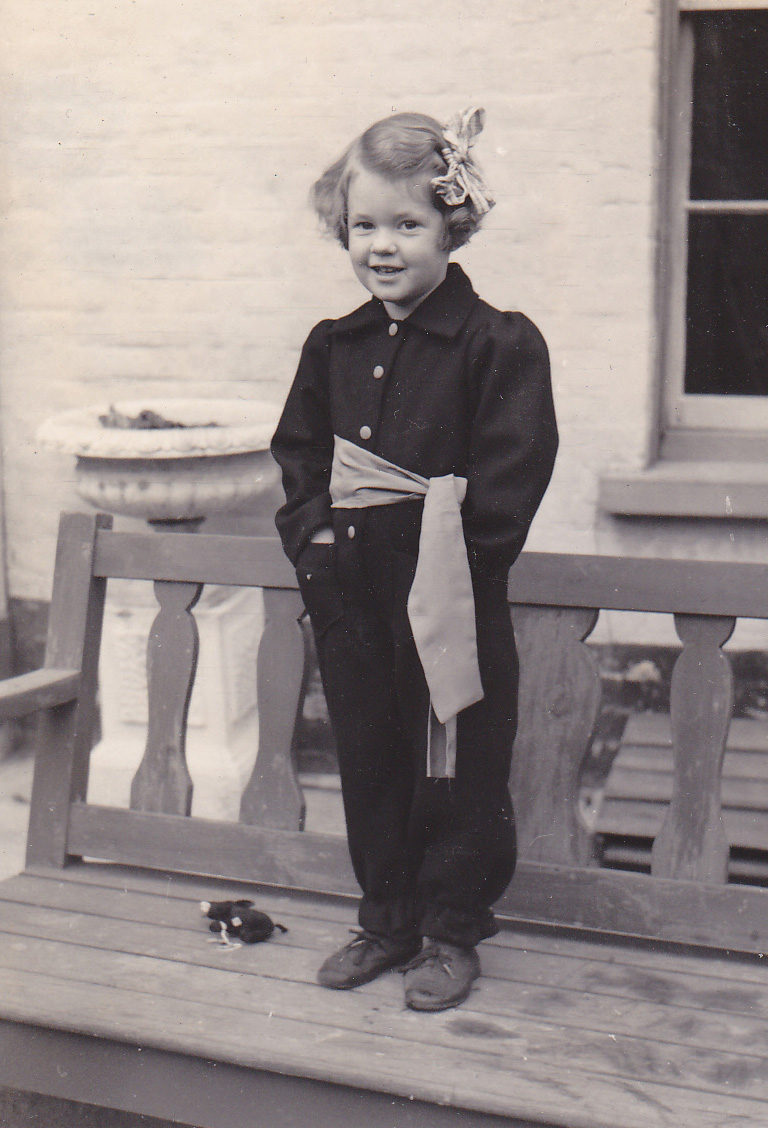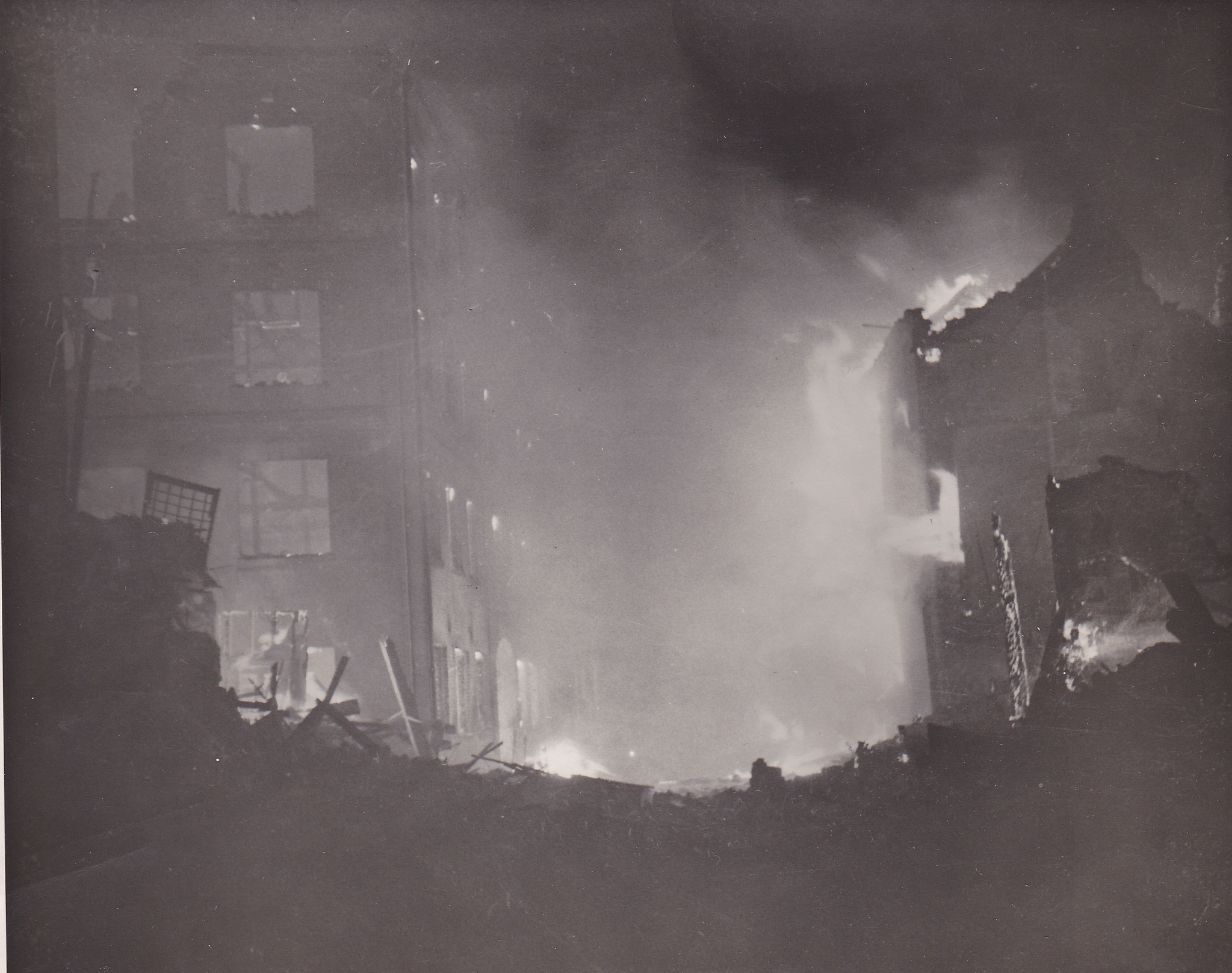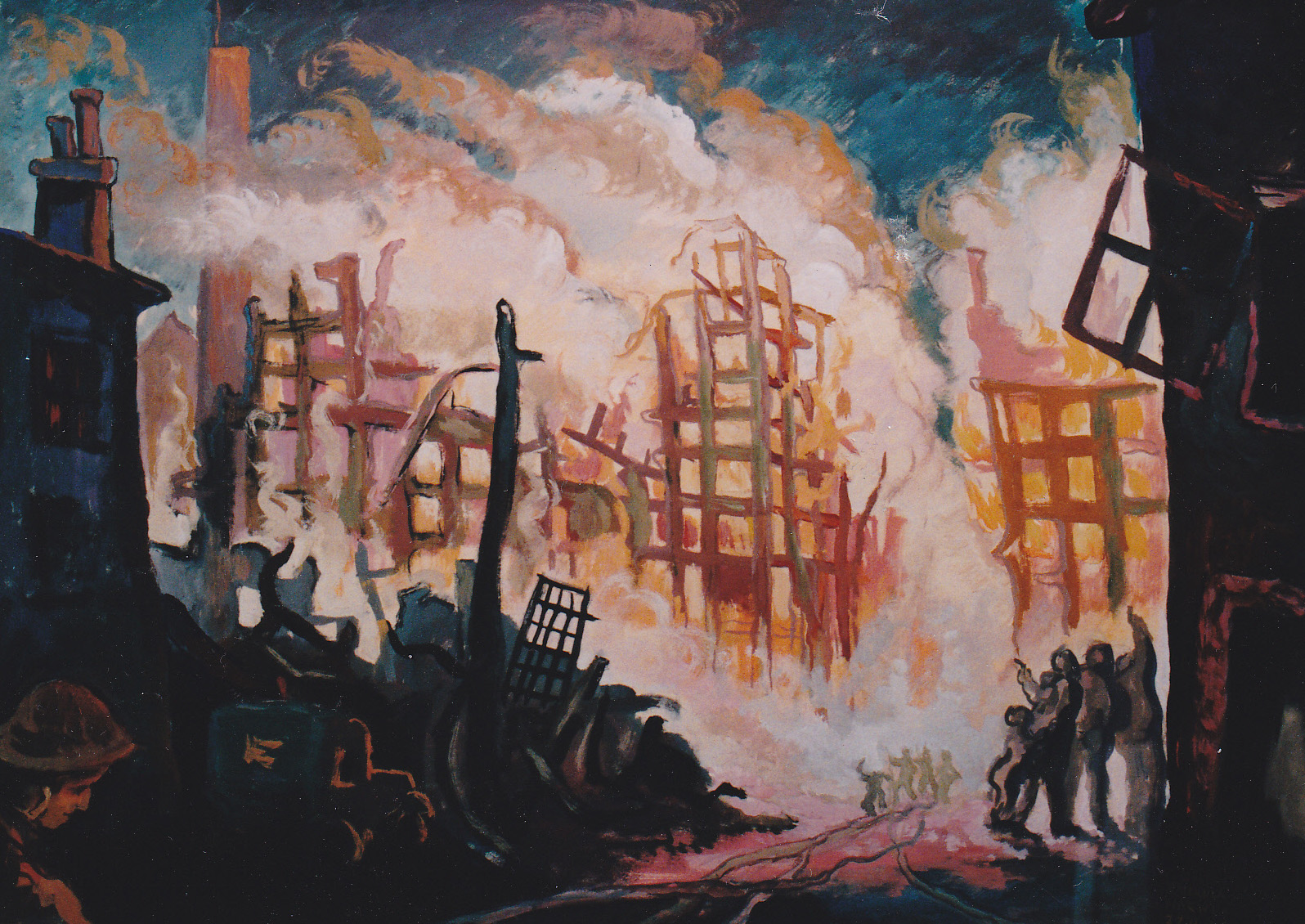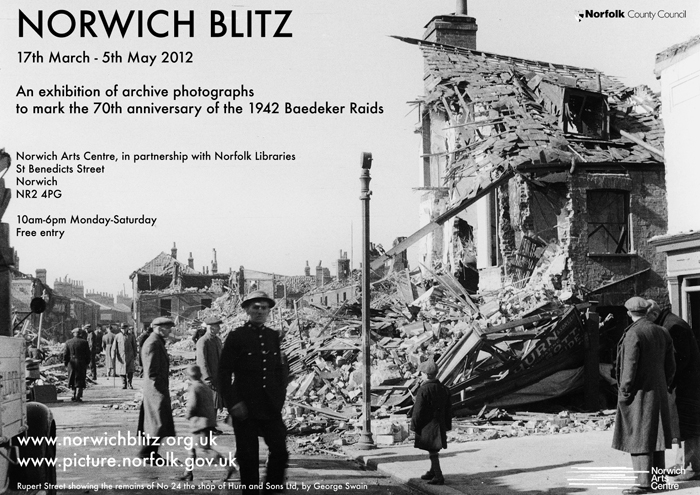Stage fright temporarily mastered, it was great to see a ‘sold-out’ audience at the Norwich Arts Centre on Friday night for the talks that marked the beginning of a special exhibition commemorating the 70th anniversary of the Baedeker Blitz on the city.
Thanks to everyone who helped make the event such a success. It was especially good to see among the audience people who lived through those dark days; people like Ralph Gayton, whose memory of the initial assault appears on my blog, Vic Hopes, who as a boy growing up in Montcalm Road remembers the ground surrounding the nearby water tower carpeted with incendiaries, and Judy Ball (nee Swain), who appears in my book as the girl in the ‘siren suit’ and whose father captured many of the most iconic images of the Norwich blitz.

Judy Swain in her 'siren suit'
The exhibition staged at the Arts Centre in St Benedict’s Street is a tribute not just to the courage and stoicism of thousands of people who endured the nights of terror and their troubling aftermath but to George Swain’s determination to record the scenes of desolation all around him. He was the only one of the city’s photographers, press men included, who was brave, or possibly foolhardy, enough to photograph the bombing even as it was happening. Pedalling off on his bike, he ventured to the very heart of the worst fires, around Westwick Street, and his pictures endure as a graphic representation of Norwich’s worst ordeal of the war.

George Swain captures the bombing in Westwick Street
But I was struck by the sheer breadth of his work, some of it not without a degree of black humour. Not least the image of a helmeted assortment of wardens smiling sheepishly beside the entrance to a subterranean post marked with a placard: ‘Hitler’s Grave’. Then there is the shot of a woman in bizarre gasmask pose. I was surprised at just how many photographs were new to me. But I was not alone. Judy Ball confessed there were images on display she had never seen before, including one of her father in the shadows of his own wardens’ post. It was situated close to her old family home in Park Lane and featured a telephone she remembered inadvertently calling as a child.
I also discovered images credited to the Tester Collection about which I knew absolutely nothing (if anyone can tell me something about who or what Tester is or stands for, I would be pleased to hear from them) and I marvelled anew at the paintings of Polish soldier, Stanislaw Mikula. Together with Philippa Ruth Miller, he stands out as the greatest of Norwich’s war artists. His works, most notably one inspired by the destruction of Caley’s factory, have a haunting beauty.

Stanislaw Mikula's painting of the destruction of Caley's chocolate factory
So, too, do Nick Stone’s mesmerising Ghost Blitz photographs. Around 70 of them are contained on a perpetual ‘loop’ that forms a perfect counter-point to the contemporary photographs all around. Their spellbinding power was evident in the crowds that gathered to watch the screen as one ‘then and now’ shot faded into another. Proof indeed that a book is needed to ensure that these images are preserved as a permanent and graphic record of the changes wrought by the bombing 70 years ago.
Congratulations, therefore, to Holly Rumble and Stuart Hobday at the arts centre for having the courage, the commitment and the gumption to mark this grisly yet significant anniversary in our city’s history with this most powerful and thought-provoking exhibition. It runs until May 5, so no excuses for not getting along and discovering just what it is we should be remembering at the remembrance service that is planned for next month.


3 Comments
Leave a reply →